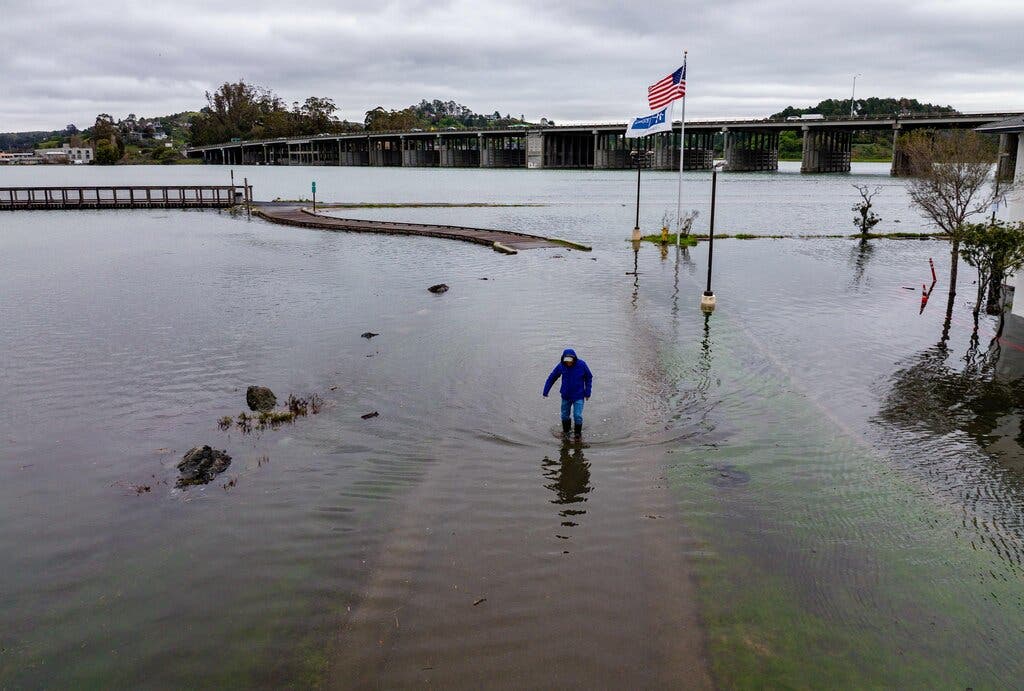Coastal Sea Levels in U.S. to Rise a Foot by 2050, Study Confirms
from NY Times
More precise measurements indicate that the increase will happen “no matter what we do about emissions.”
Feb. 15, 2022
Sea levels along the coastal United States will rise by about a foot or more on average by 2050, government scientists said Tuesday, with the result that rising water now considered “nuisance flooding” will become far more damaging.
A report by researchers from the National Oceanic and Atmospheric Administration and other agencies also found that, at the current rate of warming, at least two feet of sea-level rise is expected by the end of the century.
“What we’re reporting out is historic,” said Rick Spinrad, the NOAA administrator, at a news conference announcing the findings. “The United States is expected to experience as much sea level rise in the next 30 years as we saw over the span of the last century.”
Dr. Spinrad said that while cutting greenhouse gas emissions to limit warming was critically important, the projected sea level rise by 2050 “will happen no matter what we do about emissions.”
The report is an update of a 2017 study, and is similarly based on data from tide gauges and satellite observations.
But the new study has relatively precise estimates of sea level rise by 2050, a result of improved computer modeling and better understanding of the impact of global warming on the huge Greenland and Antarctic ice sheets. That is “providing more confidence in our ability to predict” effects by midcentury, said William Sweet, an oceanographer with NOAA’s National Ocean Service and an author of the report.
About 40 percent of the United States population, or 130 million people, live within 60 miles of the ocean. But sea level rise will not affect all of them equally, because it is not uniform.
In the United States, land subsidence and compaction of sediments along much of the East and Gulf coasts add to the increase; in those areas sea level rise may exceed one foot in the next three decades, the report said.
On the West Coast, sinking land and compaction are less common, so sea level rise is expected to be at the lower end of projections.
The report said that the calculated rise over the next three decades means that floods related to tides and storm surges will be higher and reach farther inland, increasing the damage.
What the report described as moderate or typically damaging flooding will occur 10 times more often by 2050 than it does today. Major destructive coastal floods, although still relatively rare, will become more common as well.
For communities on the East and Gulf coasts, the expected sea level rise “will create a profound increase in the frequency of coastal flooding, even in the absence of storms or heavy rainfall,” said Nicole LeBoeuf, director of the National Ocean Service.
Currently many communities on those coasts experience regular “nuisance” or “sunny day” flooding, when high tides become even higher because of the influence of the moon, wind or other factors.
But what were once nuisance floods are likely to become damaging, Dr. Sweet said.
“We definitely are predicting a flood regime shift,” he said.
The report projects that sea levels will rise an average of 10 to 12 inches by 2050, which is about as much as the increase during the 100 years from 1920 to 2020. Those projections don’t change no matter how much greenhouse gas emissions are cut over that time.
Estimates for sea level rise by 2100 in the report are less certain. But in this case, the worldwide trajectory of emissions will have a significant effect. Allowing emissions to continue unabated could add 1.5 to 5 feet more to sea levels by the end of the century, for a total of up to 7 feet, the report concluded.
The report provides detailed sea level projections for states and territories by decade for the next 100 years. Dr. Spinrad said it was meant to help local officials, planners and engineers make decisions about where to locate or how to protect critical infrastructure like roads, wastewater treatment systems and energy plants, and otherwise adapt to rising waters.
He described the report as a “wake-up call” for the United States. “But it’s a wake-up call that comes with a silver lining,” he said. “It provides us with information needed to act now to best position ourselves for the future.”
Henry Fountain specializes in the science of climate change and its impacts. He has been writing about science for The Times for more than 20 years and has traveled to the Arctic and Antarctica. @henryfountain • Facebook





